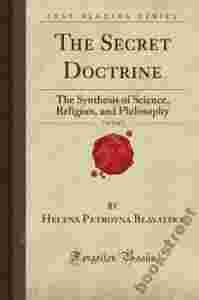|
The Secret Doctrine, the Synthesis of Science, Religion and Philosophy, a book originally published as two volumes in 1888, is Helena P. Blavatsky's magnum opus. The first volume is named Cosmogenesis, the second Anthropogenesis. It was an influential example of the revival of interest in esoteric and occult ideas in the modern age, in particular because of its claim to reconcile ancient eastern wisdom with modern science. Blavatsky claimed that its contents had been revealed to her by 'mahatmas' who had retained knowledge of mankind's spiritual history, knowledge that it was now possible, in part, to reveal. The first part of the book explained the origins of the universe itself, in terms derived from the Hindu concept of Yugas, or long passages of time through which the world is supposed to have evolved. Blavatsky attempted to demonstrate that the discoveries of "materialist" science had been anticipated in the writings of ancient sages, and that materialism would soon be proven wrong. (Quote from wikipedia.org) About the Author Helena Petrovna Blavatsky (1831 - 1891) Helena Petrovna Blavatsky was born on August 12, 1831, at Dnepropetrovsk (Ekaterinoslav), Ukraine, daughter of Colonel Peter Alexeyevich von Hahn and novelist Helena Andreyevna. In 1849 she married N. V. Blavatsky, and shortly thereafter began more than 20 years of extensive travel, bringing her into contact with mystic traditions the world over. In 1873 Blavatsky arrived in New York from Paris where, impelled by her teachers, she began her work. At first she attempted to interest the Spiritualists in the philosophy behind phenomena but they resented her refusal to accept their standard explanations. In July 1875 she was urged "to establish a philosophico-religio
|

